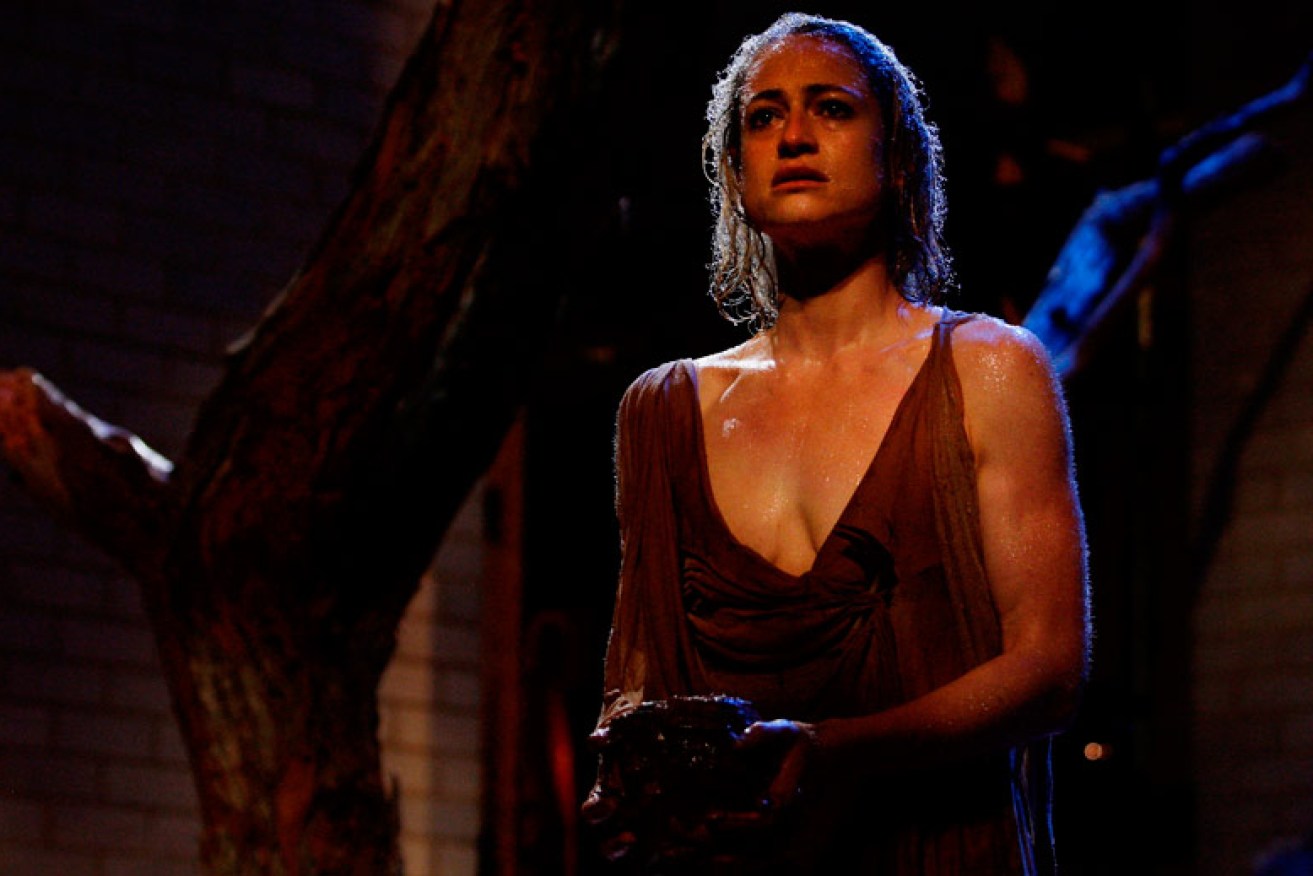
Behind the scenes of a new Australian play

Hinterland 2013 © NIDA, Photographer: Lisa Maree Williams
Julian Meyrick, Strategic Professor of Creative Arts at Flinders University, has been directing a new play, Hinterland, at NIDA for the past five weeks. The play opened last Monday for a sold-out ten-day season. Here he shares some of his thoughts about the rigours of staging new Australian theatre.
NIDA approached me to work on this play late last year. They commission a new Australian play annually for their graduating actors, and I’ve been developing this one with the writer, Jane Bodie, since January.
Hinterland is the story of four anthropologists who discover a lost tribe in some part of our shrinking world yet to be plundered (South America? The Asia Pacific?). The play’s narrative goes backwards, which shifts the spectator’s focus from outcome to cause, from ‘what?’ to ‘why?’
All plays are metaphors in that they are about something larger than themselves. In the case of Hinterland, bells are rung about many issues than don’t fit the modern predatory development agenda. Emotionally it’s quite a ride, poised confrontingly between hope and despair. Unashamedly it is a drama with Something to Say – though it does not say it in a predictable way. You would think that telling the story backwards makes it harder to follow. But it doesn’t – it just makes the climax more devastating.
Hinterland is a big show – BIG! – complete with rain, fire, mud, trees, even a river (well, part of one). It took a huge effort from a large production team to construct, and it nearly killed us all. The venue is a semi-open Atrium, which allows the show to do all sorts of things you can’t do in a standard theatre. Most of the play is set in a dry river bed in a jungle and we more or less recreate that in the set and costumes.
I’ve been working with a cast of eight, as well as NIDA’s design, technical support and props-making students. They are very similar to Flinders students, the same amazing enthusiasm and willingness to take risks. Words like ‘innovation’ and ‘creativity’ are used so often in official literature they cease to mean much. But when you work with creative arts students, you begin to appreciate how they can apply.
I have a long association with the writer Jane Bodie that goes back to 2006 when I directed A Single Act for the Melbourne Theatre Company, and before that, to 2002, when she was my first Affiliate Writer there. She is a wonderful playwright. Her 2012 play, Last Year’s Ashes was one of Sydney’s most successful. She was Head of Playwriting for three years at NIDA before going back to writing professionally.
The other day, I tried to count the number of new plays I’d worked on – not too many to total, but too many to easily remember. It’s a hard calling – hard on the writers, the actors, and the creative team that glues the two together.
The effort of developing new Australian drama is one reason more isn’t produced. The risk factor is another. When it is programmed, the cast sizes are usually very small and the pressure intense. So it is a real fillip when a tertiary institution offers a play commission and produces it in a student season. It expresses important values that should accompany a thoughtful, committed understanding of theatre. Universities are strategically important to creative arts production and the alliances that arise from their relationships with the field often bear rich fruit. I think that’s happened with Hinterland.




